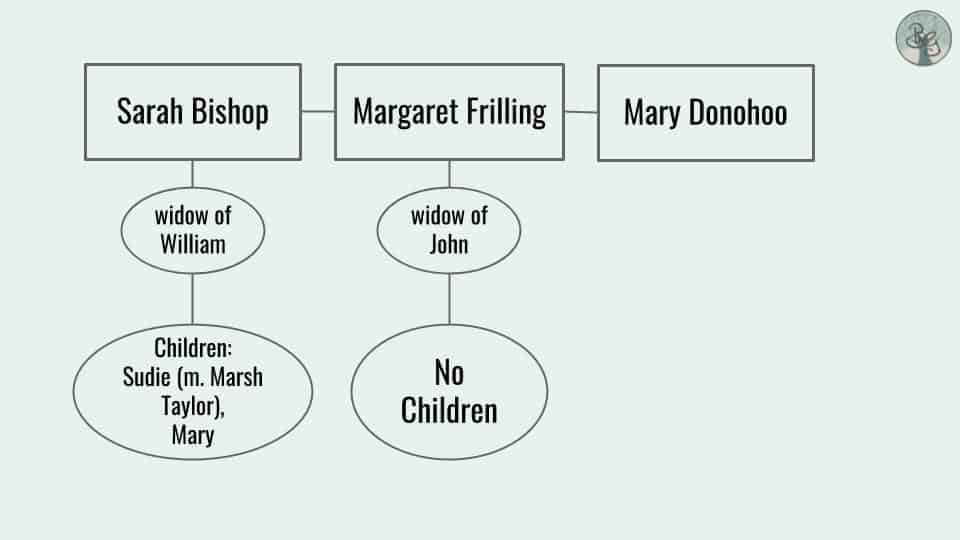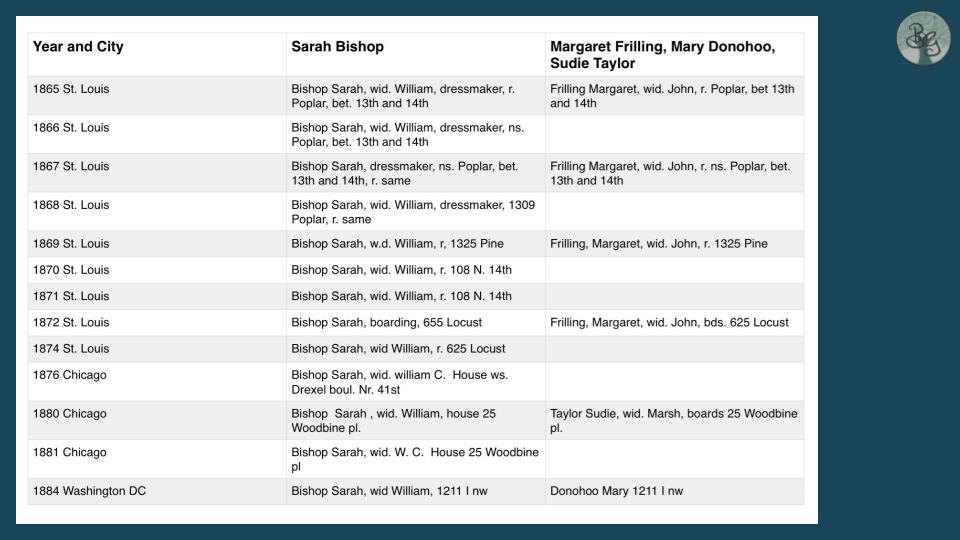
What clues can you gather about your ancestor when you trace them through several years in a city directory? We are going to explore genealogy research in city directories over consecutive years.
Watch This Episode, or Continue Reading Below
Year after year in the city directory
In another article, we talked about all the amazing clues you can find in a city directory if you look a little deeper than just the name and address entry for your ancestor. This time, I will show you what you can find when you trace an ancestor over time in the city directory.
Let’s look at a family of three sisters, all single or widowed, and moving around the country. The chart below shows the clue webs built for these sisters from records in Kentucky before the city directories were utilized:

Find Families Moving Together
Three sisters, Sarah, Margaret, and Mary lived in their father’s household during the 1850 and 1860 censuses. Then by 1870, the entire household is gone from Kentucky where they had been living. Where would three single women go and when did they go there?
A promising entry in the 1870 census in Missouri made me think I could turn to the city directories to help me pinpoint when and why these sisters migrated. With women creating few records during this time, I still want to be able to trace where they went between the censuses so I turned to the city directories.
Each individual entry alone doesn’t tell us much. It doesn’t even verify the identity of each sister. From each entry, we get the name of the woman, her deceased husband’s first name, and her address and sometimes her occupation. This information alone cannot confirm that this is the woman we are looking for.
But, when we take all the entries for each sister together it confirms their identity. This is because over time we can see that more than one of the sisters is living at the same address. The compounding clues of BOTH sisters’ names and deceased husband’s names living at the same address becomes compelling EVIDENCE that we have the correct family we seek.
By searching the city directory for as many years as it exists, and in conjunction with the US Federal Census, we were able to confirm where these sisters were from the year of 1865 through 1884. They migrated from Kentucky to St. Louis, Missouri, to Chicago, Illinois, to Washington D.C.

Tips for Searching Consecutive Directories
- Next time you look in a city directory, remember to also look for other known family members.
- All the family entries together tell a much stronger story than individual entries alone.
- Entries over time also tell a more compelling tale than an entry for a single year.
- Trace the known family members in as many years of the directory as you can gain access to.
How many consecutive years have you found an ancestor and their family members in the city directory? Did the clues over the years help you discover more about that ancestor’s story?
Pin For Later

See you next time,
Melissa








When searching directories don’t depend on indexes. Many directories were OCRed and sections of pages are often missed. Names (if they were spelled correctly in the first place) can also be slaughtered by OCR. Look at the location name on the page for your relative – I have seen a directory that covered about a dozen towns in 2 states indexed so that everyone was listed as a resident of the first town in the directory.
I have successfully used directories to distinguish between the 2 Philip Vacaro families in Louisville KY and who their children were. These families appeared to be deathly afraid of the census and do not appear, but are in the directories. As you track people in directories pay attention to their occupation which can be an important clue.
Thank you for sharing these tips! I agree that a thorough researcher should not rely on the OCR search alone. Do a manual search if you do not find the person you were looking for through the search box. I showed an example of the issues that OCR can cause in this video on City Directories: https://youtu.be/LxjF8GBS3Lk
Your Philip Vacaro project sounds fascinating and a perfect use for city directory research.
Best,
Melissa